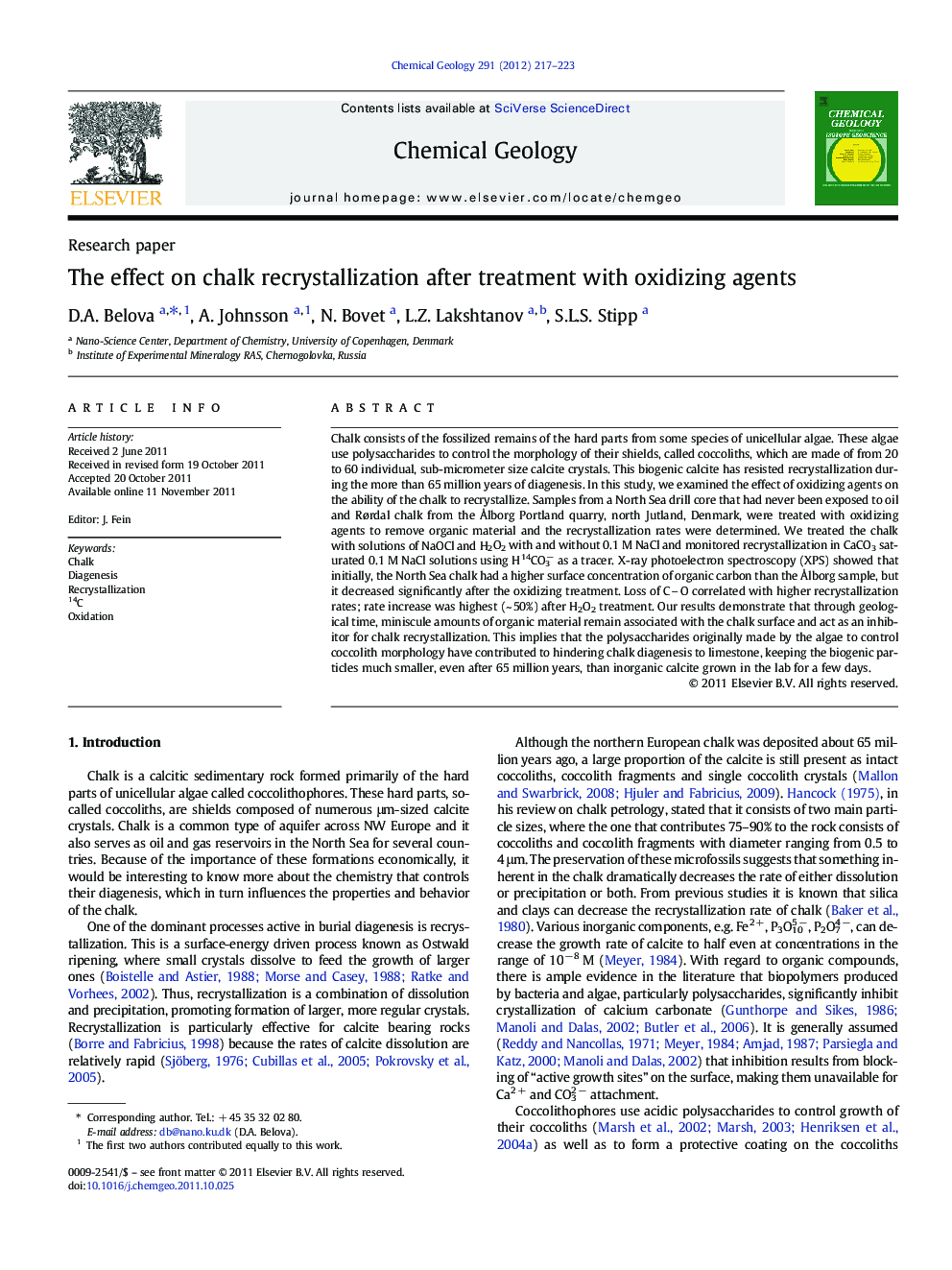| Article ID | Journal | Published Year | Pages | File Type |
|---|---|---|---|---|
| 4699582 | Chemical Geology | 2012 | 7 Pages |
Chalk consists of the fossilized remains of the hard parts from some species of unicellular algae. These algae use polysaccharides to control the morphology of their shields, called coccoliths, which are made of from 20 to 60 individual, sub-micrometer size calcite crystals. This biogenic calcite has resisted recrystallization during the more than 65 million years of diagenesis. In this study, we examined the effect of oxidizing agents on the ability of the chalk to recrystallize. Samples from a North Sea drill core that had never been exposed to oil and Rørdal chalk from the Ålborg Portland quarry, north Jutland, Denmark, were treated with oxidizing agents to remove organic material and the recrystallization rates were determined. We treated the chalk with solutions of NaOCl and H2O2 with and without 0.1 M NaCl and monitored recrystallization in CaCO3 saturated 0.1 M NaCl solutions using H14CO3− as a tracer. X-ray photoelectron spectroscopy (XPS) showed that initially, the North Sea chalk had a higher surface concentration of organic carbon than the Ålborg sample, but it decreased significantly after the oxidizing treatment. Loss of CO correlated with higher recrystallization rates; rate increase was highest (~ 50%) after H2O2 treatment. Our results demonstrate that through geological time, miniscule amounts of organic material remain associated with the chalk surface and act as an inhibitor for chalk recrystallization. This implies that the polysaccharides originally made by the algae to control coccolith morphology have contributed to hindering chalk diagenesis to limestone, keeping the biogenic particles much smaller, even after 65 million years, than inorganic calcite grown in the lab for a few days.
► Oxidizing agents remove CO bonds from chalk surfaces. ► Lower CO concentrations correlate with higher calcite recrystallization rates. ► CO containing organic compounds inhibit chalk recrystallization.
